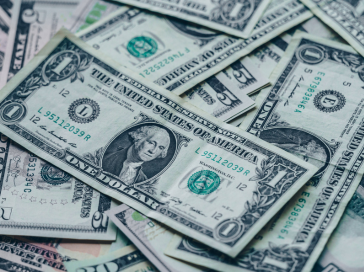Dollar Defies Expectations, Rises for Second Week
The U.S. currency climbs again, unsettling rate-cut bets amid stronger-than-expected economic data.
Contents
Dollar Rebounds
The U.S. dollar posted gains for the second consecutive week, recovering part of its significant losses since the start of 2025.
This rebound was driven by surprisingly strong economic data,
particularly signs of continued strength in consumer spending and a resilient labor market,
prompting investors to reassess their bets on Federal Reserve rate cuts.
Although the dollar index retreated slightly in the latest session, the currency rose about 1.3% since July 7,
marking its best two-week performance this year. Still, it remains down approximately 8% year-to-date.
Doubts are mounting regarding the Fed’s path toward monetary easing,
especially after interest rate swap contracts showed only a 58% probability of a rate cut in September — a decline fueled by persistent positive data.
According to Skyla Montgomery of Barclays,
The dollar was boosted by a combination of intense economic activity and early signs that tariffs are filtering into U.S. inflation,
making it increasingly difficult to justify a dovish pivot by the Federal Reserve.
Shifting Bets
Despite Fed Governor Christopher Waller reiterating his support for a rate cut this month,
markets showed little reaction, and the likelihood of a July cut remained nearly zero.
At the same time, speculative bets on a stronger dollar increased.
Data from the Commodity Futures Trading Commission showed that non-commercial
investors raised their net long positions to $17.5 billion,
down slightly from $18.6 billion the previous week. Option contracts also began to reflect a modestly bullish bias,
with the 6-month implied volatility skew turning positive — signaling higher demand for call options betting on a rising dollar.
In the bond market, U.S. Treasury yields declined across all maturities.
The two-year yield — the most sensitive to Fed policy — settled at 3.87%.
Meanwhile, the yield curve steepened, with the spread between 5-year and 30-year bonds surpassing 100 basis points,
highlighting persistent market anxiety.
Waller’s recent remarks, including his openness to replacing Jerome Powell as Fed Chair if asked,
further fueled concerns — especially amid rising expectations that tariffs will add to inflation later this year.
Although former President Trump denied any immediate plans to remove Powell,
JPMorgan analysts believe that uncertainty will continue to weigh on long-term Treasury valuations in the months ahead.
Dollar Defies Expectations, Rises for Second Week

